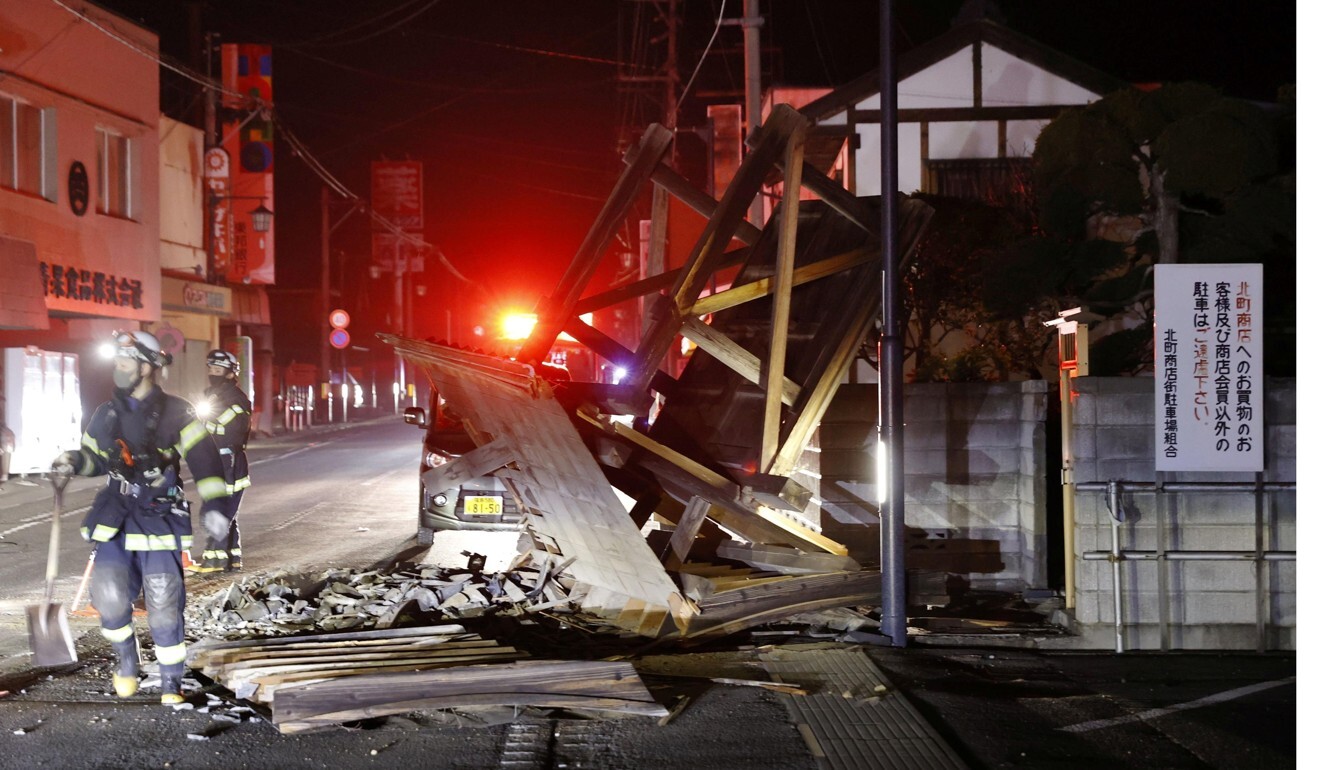
Japan earthquake evokes memories of 2011 Fukushima disaster
- The 7.3-magnitude earthquake off Japan’s Fukushima injured over 100 and caused power outages and transport disruptions
- Officials believe it was an aftershock of the 9.0 quake that sparked a tsunami and nuclear meltdown, with residents saying they relived the experience
The 7.3 magnitude quake struck before midnight, cracking walls, shattering windows and setting off a landslide in Fukushima, the area closest to the epicentre. At least 121 people were injured, NHK national television said, including several who suffered fractures.
Earthquake in Japan leaves thousands without power
Hoshino said Saturday’s quake brought back frightening memories.
“My body immediately reacted, and I couldn’t stop trembling. My legs were shaking too, but I couldn’t gauge whether it was safer to run out or stay in, so I ended up doing a weird little dance,” she said in her bar on a backstreet in the city of Iwaki, roughly 200km (120 miles) north of Tokyo and not far from the quake’s epicentre.
“We were hit by this coronavirus pandemic, and so we were looking forward to reopening our shops, and now this happens,” she said, referring to a locally declared state of emergency that had closed her bar from January and was set to lift on Monday. “It’s just one thing after another.”
The 11.08pm quake shook buildings in the Japanese capital Tokyo, and cut power to about 950,000 homes across eastern and northeastern Japan. By morning, though, power was restored to virtually all.
About 4,800 households remained without water, forcing residents to line up with plastic jugs to receive water from trucks.
On Sunday more than 250 people were at 173 emergency shelters in Fukushima and surrounding regions, where social distancing measures have been put in place. Many may have since returned home.
Though much of Iwaki appeared as usual, tiles had fallen from the front of at least one building, and the sound of broken glass being swept up echoed from several shops and restaurants.

On the wall of Noboru Endo’s hair salon a hairline crack had opened, in the same place a wider one opened 10 years ago, but otherwise there was little damage.
Endo, 64, said Saturday’s quake did not compare to the one a decade ago, which went on for several minutes and had weeks of frequent aftershocks.
“We’ve all pretty much gone back to life as usual, save a few areas that are still badly affected,” he said of reconstruction efforts in the area.
Debate over Emperor Akihito’s evacuation to Kyoto after Fukushima disaster
“I was at home. I cannot even remember whether it was horizontal or vertical shaking. But it felt like it lasted for 30 seconds,” said Masami Nakai, a municipal official in Soma city in northern Fukushima. “The shaking was so strong I became truly afraid of my physical safety.”
Tomoko Kobayashi, who works at a traditional inn in Fukushima’s Minamisoma city, told Kyodo news agency that “the initial jolt felt more powerful than the one I experienced in the Great East Japan Earthquake” of 2011.

01:13
Massive earthquake hits Japan's Fukushima coast
Renowned author Yu Miri, who also lives in Minamisoma, tweeted a photo of her home, showing books, potted plants and other belongings strewn across the floor.
“My house in Odaka, Minamisoma city is all messed up,” she wrote. “I hear the ground rumbling. And another quake,” she tweeted about an aftershock.
Magnitude-6.5 earthquake jolts northern Japan, no tsunami threat
There was no tsunami this time, and no reports of irregularities at any nuclear plants. NHK reported that about 160ml (5 ounces) of water had leaked from a spent fuel pool at the Fukushima Dai-Ni reactor but that this presented no danger.
Shinkansen bullet train service to much of northern Japan was suspended due to damage along the tracks. Service along one line was not expected to be restored until at least Tuesday.
Beermakers such as Asahi Group Holdings and Kirin Holdings, which have factories in Fukushima and Sendai, said they were assessing the impact on their facilities. Kirin said its Sendai plant sustained light damage and it was still checking the situation.

The power outages did not affect any of the Pfizer Covid-19 vaccines that arrived on Friday for inoculations that are to start this week, said Chief Cabinet Secretary Katsunobu Kato.
Earthquakes are common in Japan, one of the world’s most seismically active areas, and Japan accounts for about 20 per cent of the world’s earthquakes of magnitude 6 or greater.
Additional reporting by Agence France-Presse

